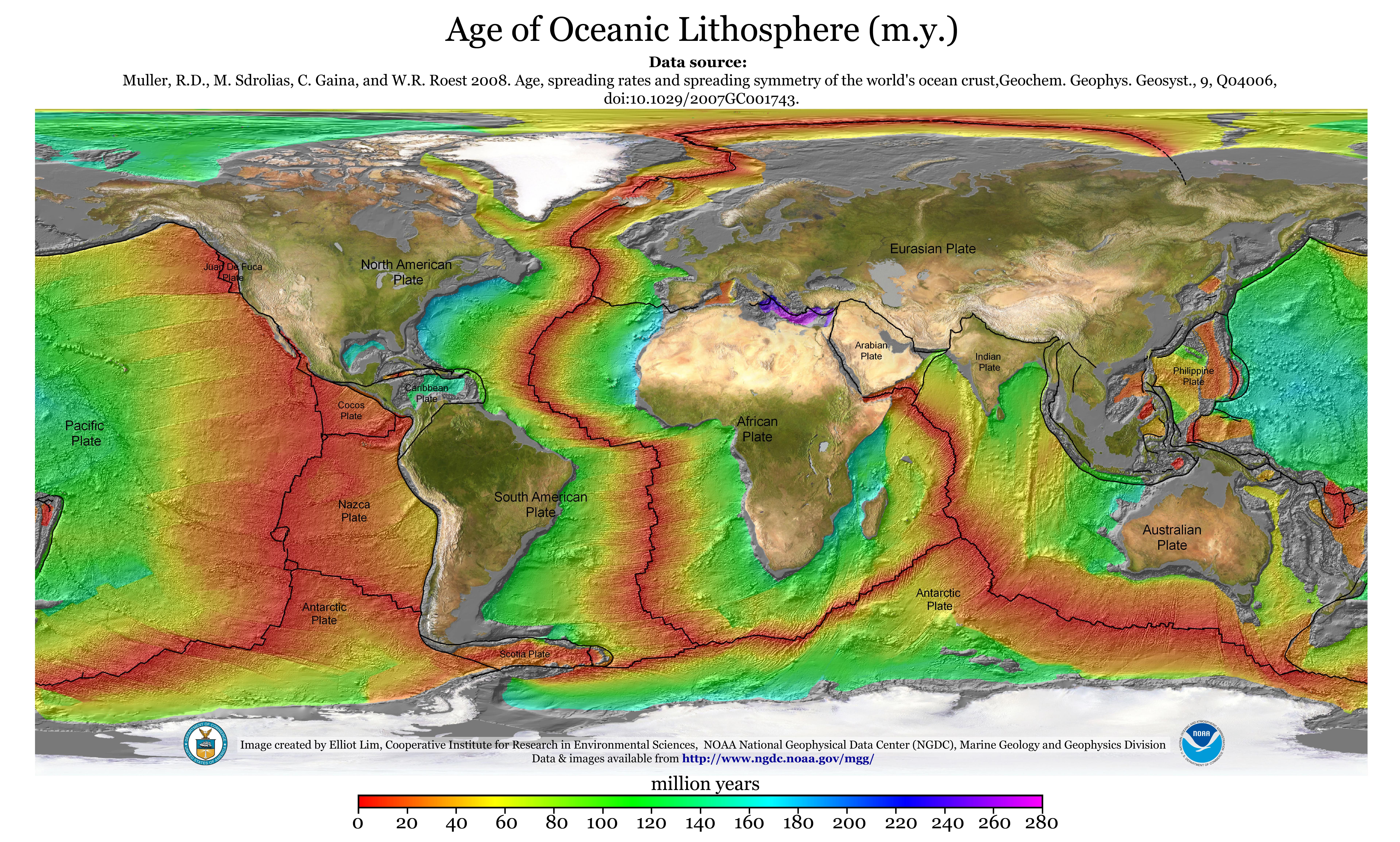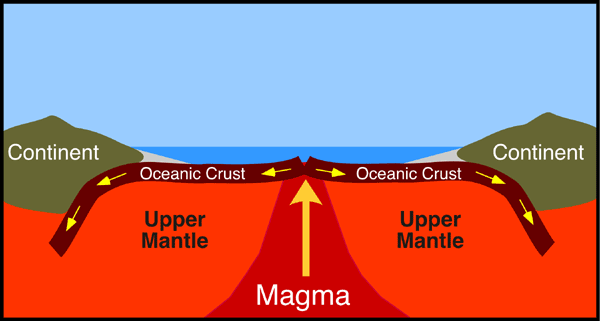Sea Floor And Continental Crust Age Differecne

Why is the seafloor so young.
Sea floor and continental crust age differecne. This difference in relative density causes oceanic plates to subduct beneath the more buoyant continental plates. Continental crust also consists of the shallow seabed close to shores called continental shelves. The first difference between the two layers comes in the composition of the rocks. Unlike oceanic crust that has young geological rock continents can have rocks up to 4 billion years old.
The difference between oceanic and continental crust rock material is the density and explains why the oceanic crust is beneath the ocean s surface while continental crust can rise into the earth s atmosphere in the form of mountain peaks. This graphic shows several ocean floor features on a scale from 0 35 000 feet below sea level. The following features are shown at example depths to scale though each feature has a considerable range at which it may occur. The continental crust has a density of about 2 6 g cm3 which helps the continents of the world to stay in one place.
For that geologists date and study continental crust. The difference in density has an impact on isostacy of crust floating on the semi fluid upper mantle asthenosphere with continental crust about 2 7g cm 3 rising or floating above oceanic crust about 3 5 g cm 3. The oceanic crust is mainly made out of dark basalt rocks that are rich in minerals and. Oceanic crust tends to get colder and denser with age as it spreads off the mid ocean ridges.
It is due to the process of subduction. Difference between oceanic and continental crust. Hess went on to say that as the ocean crust spreads and cools over millions of years it becomes denser and eventually sinks down into oceanic trenches or subduction zones a long way from where it forms at the mid ocean ridge crest. Oceanic crust is the crust layer found beneath the oceans and contains denser rock than the continental crust.
Because of this correlation between age and subduction potential very little ocean floor is older than 125 million years and almost none of it is older than 200 million years. It gets so dense that it sinks in the. This sounds old but is actually very young compared to the oldest continental rocks which are 4 billion years old. The oldest oceanic crust is about 260 million years old.
Therefore seafloor dating isn t that useful for studying plate motions beyond the cretaceous. As ocean crust descends toward the hot mantle it melts and becomes recycled into the mantle.



















